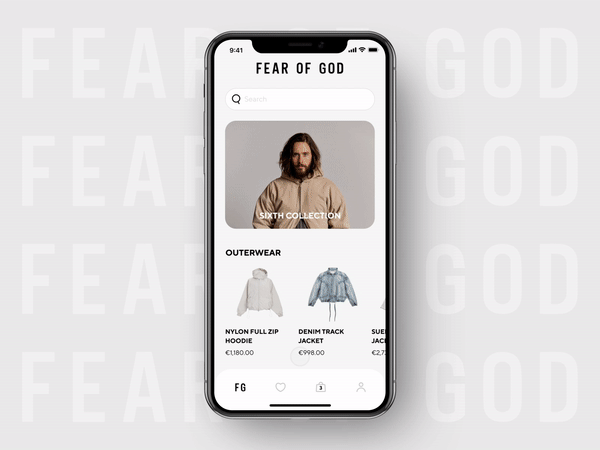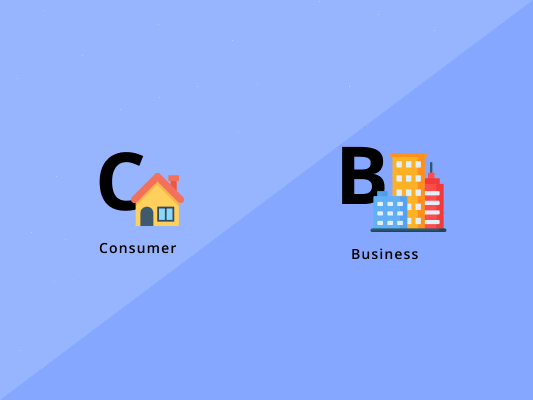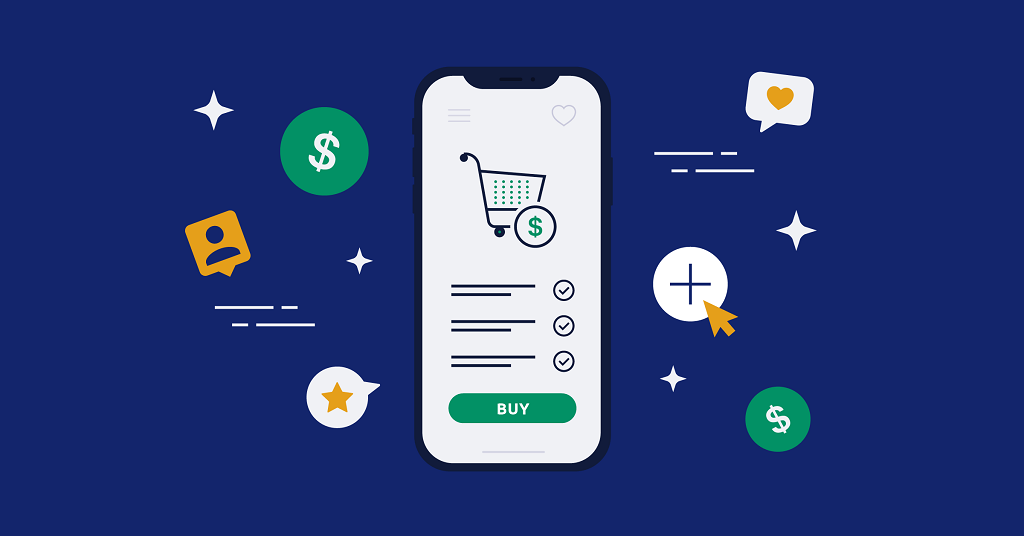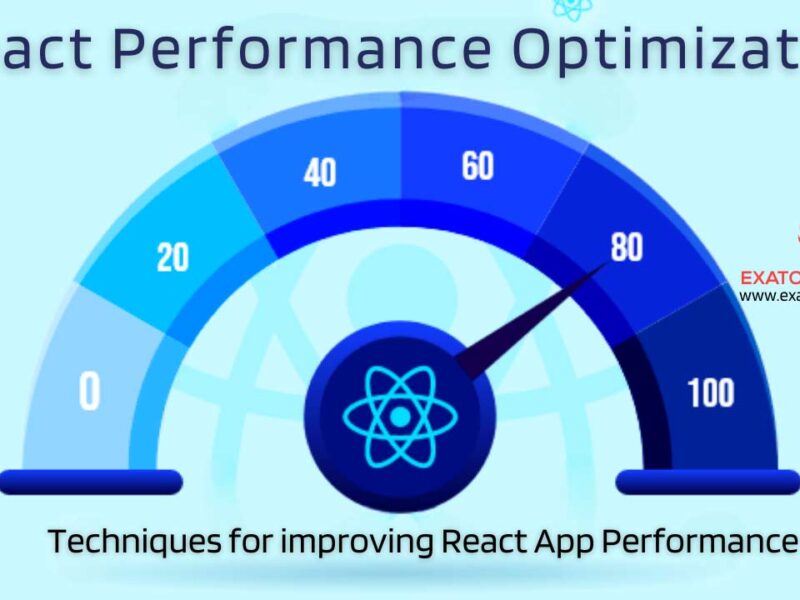The ubiquitous 24/7 connectivity provided by mobile internet service providers is currently the point of connection for practically everyone, connecting both consumers and companies in an effortless manner. Mobile commerce, or m-commerce, is quickly replacing traditional eCommerce app development.The value given to businesses through the development of operating system-friendly apps increased tremendously as the use of mobile phones and devices, including tablets and laptops, exploded.
This blog will assist you with the fundamental issues that must be kept in mind when deciding to complement an eCommerce business and website with an app, with the most pressing question being what is the best method to developing a robust eCommerce mobile app.
Reasons for Developing Apps for eCommerce Businesses

Today, creating an e-commerce app development that can be used virtually anywhere at any time is more of a requirement for any business to run effectively. Due to the prevalence of mobile and online retail channels, an application can significantly improve the sequence of events that govern company transactions.
The scope of the eCommerce app

Given that approximately 80% of smartphone users make some type of online purchase, the figures also support the need for eCommerce mobile app development. It is becoming more and more important to have a mobile-friendly channel for the sales of goods as more and more consumers purchase online.
Advantages
The advantages make decision-making easier. The benefits of eCommerce mobile apps to organizations are as follows:
- shopping is the new trend
- Benefits for small and new businesses
1. Helps attract customers easily
2. It is a competitive advantage
3. Helps increase sales - The millennial preference is for all things mobile.
- Enables better customer service
- allows for offering customization A customer-centric company is simple to establish.
- Easy analytical analysis of all activities
- Enables contactless payments
- More and improved marketing
- Brand building and propagation is easier
- Higher Customer loyalty.
An environment is able to retain customers where they get a more personalized and responsive eCommerce experience. They will want to re-visit and even recommend the shopping platform or app ahead for perks like loyalty and recommender benefits.
What you may miss.
A big advantage that business owners frequently miss is the ability to accomplish various business objectives through various types of applications. Take a positive step by knowing the kind of application required. It is the first step towards the goal. Releasing an app can assist with business goals like better UX-UI, resulting in better user engagement and increased conversion.
Before discussing the strategy, we quickly cover the many app kinds that can be created, for various business models and objectives.
eCommerce Mobile App Types

The use of smartphones for buying makes Mobile commerce or m-commerce into a platform that is a consistent driver for businesses. The “success mantra” has given businesses new ways to generate income. Customers now have access to constant connectivity thanks to mobile applications. They can now access their preferred retailers whenever they want to place an order.
The applications that will support the operations are also varied based on the numerous business models that are in use. The features and functionalities of apps distinguish their goals and objectives.
The four categories
- Business-to-Business
- Business-to-Consumer
- Consumer-to-Consumer
- Consumer-to-Business
However, there are various kinds of business models, and some businesses use a combination of two or even more operating models.
Make a judicious choice of an app type that enables a seamless exchange of goods and assets across the channel depending on the sort of transactions anticipated as part of the business strategy. An crucial channel of communication between the two parties will be made available through the application. The app must allow both the vendor (the selling party) and the customer (the receiving party) to carry out their respective roles.
Here is a discussion of various e-commerce app kinds that have been created to support various activities that will take place over them:
Business-to-Business eCommerce App
This category includes apps that can facilitate business deals through their user interface. A mobile channel allows for the exchange of both goods and services and can handle significant transactions for huge exchange quantities.

Examples of businesses selling to retailers who then sell to consumers include Quill, Amazon Business, and Alibaba. Therefore, the goods that are sold here can be used as raw materials or products in future businesses.
Business-to-Consumer eCommerce App
The applications created as an addition to a Business-to-Consumer model will consume both the company and the product’s end customer. Direct sales occur via the application channel. Such ecommerce mobile apps include those from Amazon and Domino’s.

Whereas retailers could limit the stocks and variety when dealing with various brands, such applications give the user direct access to all the products being offered by a company.
Consumer-to-Business eCommerce App
Businesses also purchase specialty domain-specific products including technological assets, design, and content. Subject matter experts have a venue to showcase their abilities and develop these business relationships using C2B tools like Clutch and GitHub.
Businesses encourage improving the habit of sharing priceless talent through such channels and creating distinct merits on such purchases.
Consumer-to-Consumer eCommerce App
A Consumer-to-Consumer model works through a mobile app when customers trade their goods, services, or offerings among themselves without the help of any businesses or companies.
Other eCommerce application types
Ticketing Booking eCommerce App
To make reservations for cabs, hotels, live entertainment, gaming, travel, professional or social events, and parties, use these e-commerce apps. The application is used by the organizers to share information about their event, and interested parties can use it to purchase tickets or passes by making payments using the program’s user interface.
Two well-known examples of ticket-booking software are Goibibo and Momondo. Other similar eCommerce applications enable the direct exchange of such goods between event planners, event managers, and end consumers.
ECommerce Aggregator Mobile App
Aggregator eCommerce apps are those that connect service providers like Walmart Inc. and Etsy Inc. with the end user via mobile devices. They often provide a platform for service providers to display their products, offerings, or items, and customers can purchase or use them directly from the application interface.
The owners of the application do not directly offer any of the listed services, nor do they require any kind of infrastructure setup; instead, they promote the services of sellers who use the app for their company.
The various types of eCommerce apps covered above share some components when developing them. These elements support the application’s efficient operation.
Developmental Components of an eCommerce App
An e-commerce app’s creation is a guided procedure. What should be included and in what manner depends on the purpose or business goal that needs to be achieved? But all eCommerce programs share a few components.
The key elements that assist create an application and enable efficient full-circle operations are covered here.
Multimedia Content
Multimedia content includes a variety of content operating within an e-commerce app, such as text, photographs, videos, graphics, and even music, that guide user journeys on the platform. They are the major factor keeping a user hooked on the app and making them use it for transactions.
The content, which was created to mimic conversations between two people, is in charge of increasing app conversions and client loyalty.
Content Storage Servers
Installing robust servers that can handle a lot of diversified content is necessary. Users receive digital content along with crucial data pertaining to their personal information. To support the app’s user base, the servers must be strong, secure, and dependable.
a. Multimedia Server Processors
Processors that are dependable and strong are needed by the servers that transform unreadable data from numerous media sources into readable information. For all eCommerce apps, the processor deals with data and information that is crucial from the user’s perspective and stores it.
These processors need to be supported by symmetric multiprocessors with parallel processing capabilities since they handle an excessive volume of data from thousands of concurrent users of the application. Through the app interface, several types of data are processed for information exchange.
b. Client Server Architecture
Most e-commerce apps’ basic architecture is based on message passing between the client/consumer and the server. In terms of the order of occurrences, the format is of the “request-response” kind.
A user interface is typically a tool that receives a query that is handled at the server end. The server end of the e-commerce app is where storage, security, execution, and progress are all handled.
c. Servers for Videos and eCommerce
It is important to keep in mind that different types of video data will be fed into and received from any application created for e-commerce purposes. When preparing to construct an eCommerce software, video servers must be a key element.
These servers oversee the management of videos used for corporate multimedia, video conferencing, online purchasing, and communications. They must be equipped to handle the simultaneous inflow of planktonic amounts from thousands of users.
Information Exchange for eCommerce Apps
An e-commerce app’s information interchange mostly makes use of these three services working together:
Managing cellular, paging, and radio applications for wireless services
Telephonic linkage through telecommunication services, both domestically and internationally
Coaxial, satellite lines, optical fibers, and computer services are used by cable services to manage the internet and related services.
All of them regulate the communication channels used by any e-commerce app.
Access Devices – Consumer End
The execution or end device will determine how any eCommerce app development is used by the user or buyer. Depending on their comfort level and the task at hand, different users use various gadgets. A static personal computer, a television, a mobile phone or tablet, a smartwatch, a voice assistant, and many other devices can all be considered as devices.
Their experiences differ depending on the gadget used. The development must be reliable enough to provide a consistent UX across all devices.
Once the fundamental components are in place, the next stage is to decide which features an e-commerce software must have. This section outlines the functionalities that must be created right from the MVP stage.
Essential Features for eCommerce App Development
One of the most essential aspects that affects the performance of the business using the app is mapping the key features when creating an e-commerce app. Given that practically all human activity today takes place on a mobile device, the development must ensure that an eCommerce app transaction is as convenient as possible.
The final organization of the application, its appearance, and the cost of development will all be influenced by the feature list that is decided.
Depending on the various objectives of the eCommerce app being developed, many features can be included or excluded from this list. Consequently, the best strategy in deciding to design an eCommerce app is custom mobile app development.
mCommerce Trends In 2022
Chatbots
Brands need to interact with their consumers in order to increase customer engagement. Customers feel more connected to the company when there is open communication between them and the brand. Additionally, providing responses to questions quickly will aid in increasing conversions on the mobile app.
Chatbots increase consumer engagement by giving them answers, participate in marketing campaigns, cross-sell products, and more. Additionally, brand ties cultivated through customer communication, strengthens consumer loyalty.
Additionally, the data collected by chatbots gives companies the chance to develop goal-driven objectives through analysis.
Voice Assistants
In the modern era, you can provide a better customer experience if your services are delivered more quickly. This is exactly what voice assistants do. The customer can browse and search the website more quickly and intuitively, which makes them crucial to mobile apps in 2022 and beyond.
Big Data
Big Data has already begun to change how modern businesses operate. By doing real-time analysis of user engagement across channels it provides the user with a connected and comprehensive experience. As firms make more of an attempt to attract customers Big-function Data is developing.
Since, analysis of the target audience’s engagement across channels, demographics and ages influences Mobile app development for a business Big Data can improve UI/UX of the app to better meet end-user needs.
Furthermore, a company’s marketing efforts may be guided by big data. Data-driven insights can improve the results.
AR and VR
By offering an immersive experience, virtual reality and augmented reality seek to increase user engagement. Superimposing a computer-generated image on a real-life live image using technology on gadgets, AR can allow people to interact with virtual items in actual environments.
What started with video games like Pokemon Go has evolved to improve user experiences in e-commerce and online shopping.
Online retailers like Amazon, Ikea, and others have taken advantage of augmented reality technology to give shoppers a preview of how things would seem in the room they intend to use.
On the other hand, virtual reality, or VR, makes use of technology to replicate a real-world setting in the virtual realm. Because VR gives a feeling of physical presence in the environment virtually created by the computer Fashion and Real estate are two fields that have profited greatly from VR.
Integration of Apps with Wearables
Wearable technology sales have been expanding for a while. Every day, more businesses release items that are dependable and packed with features, giving buyers a wide variety of possibilities.
Market Watch estimates that the number of wearables sold will rise by at least 25 million units in 2021. The hardware sales drive demand for software integration. So, mobile app integration with wearables is crucial. However, underscoring its relevance as a crucial factor in 2022 may give companies a commercial advantage in terms of competition.
Geofencing
A key personalization tool, geofencing enables firms to customize their marketing efforts according to the location of their clients. By utilizing technology, they may notify clients via their mobile app whenever they are close to a physical location.
Businesses can leverage this feature in a variety of ways to increase interest in their goods and services. Customers can be attracted by, among other things, items that are in stock, popular products, profitable discount offers, and other marketing tactics.
Enhanced Security Measures
Malicious actions have developed as a result of the global expansion of e-commerce. Payment methods have seen disruptive changes in the last ten years throughout the e-commerce ecosystem.
The threat of harmful assaults will continue to grow, which will cause security worries to rise. Data security is still a major problem. Having vulnerable data invites disastrous results.
Additionally, there is still a subset of clients who prefer to do their transactions on desktop computers rather than smaller mobile devices.
In addition to becoming a trend for 2022, improved security measures will likely become more of a priority in the future.
eCommerce App Development: The Process Simplified
A specialist member is a subject matter expert. An expert in the area of the e-commerce app but also having knowledge of many other fields. New enterprises and entrepreneurs frequently encounter forks in the path.
Before continuing with the creation of the software, all of these questions must be resolved. Here, we outline the steps that will enable you to complete the process without difficulty.
Identify App Goals
Any e-commerce app’s ability to effectively achieve the goals of the business will determine its success. However, the development of the app will always stall out and fail to achieve its goals if the goals that must be achieved through it are not apparent.
Be clear while defining your goals. So that you may prepare for integrating any newly developed functionality. The goal should be to gather pertinent data via the app in order to improve the business and its services and goods.
Identify the Audience
Those who use the app eventually decide the fate of the company. It is crucial to understand the user base, their preferences, demographics, hobbies, and feedback regarding the app.
Understanding the nature of the app user makes it easier to develop user journeys and tales that have a lasting impact and keep users returning to the app. The interest of the targeted audience determines the specialty of the app and eventually, the special features influence the manner of development of an e-commerce app.
Select the Right Technology
The next stage is to determine the features and functionality of the app. We already know the users and the functionalities the App needs to carry so the best formats for e-commerce are PWAs and Native applications.
PWAs, or progressive web apps, are, as their name suggests, dynamic websites that function and move like mobile applications.
Native Apps are standard programs for mobile operating systems like Android and iOS and can be downloaded from playshops.
Clients get the end product to decide the road. Since there is room for customization and scalability with app development, a technological partner with expertise can collaborate with you to realize your ideas.
Identify Requirements & Features
It’s time to start thinking about the features that the eCommerce software should have after selecting what to produce, for whom to develop it, and how. We did identify a few essential elements that ought to be present in practically all e-commerce apps.
A group should recommend features for consumers and users. It is necessary to identify a feature list created specifically for the firm after careful planning.
Process and Budget Planning
The thought goes into choosing the features and functionality to add to the e-commerce app development, but it’s important to keep in mind that there is a budget to consider as well.
Quality Testing and App Release
There will always be gaps, regardless of how thorough the development process is and how knowledgeable the minds behind the planning are. Standard app development processes must include a thorough testing approach for load, regression, device, performance, responsiveness, and usability.
Marketing the App
Marketing the eCommerce company and the app will help create business leads now that the app has been developed and is available for download and use.
Promote the name of the eCommerce company using SEO technologies and a mix of marketing techniques like content, social media, and loyalty programs. The development phase of the App is the best time to include marketing tools.
How Much Does It Cost to Develop an Ecommerce App?
The internet has a tonne of pricing estimates if you search for how much it will cost to design an eCommerce app. However, the real concern is whether or not those estimates are reliable enough. How well do their estimates match actual costs?
According to a recent study by GoodFirms, the average cost of creating a straightforward app can range from $38,000 to $91,000. While difficult applications can cost $91,550 or more, medium complexity applications will cost between $55,000 and $131,000 to develop.
A basic app will cost you roughly $30,000, medium-complexity apps will cost between $50,000 and $75,000, and complex apps often cost more than $75,000 per app. This is based on the developer’s hourly fee of $30.
Many of you ask about such a big difference between the app versions and factors that exactly determine the price of developing an eCommerce app.
There are a lot of things that might affect how much it costs to design an app, but the main one is the kind of app you want for your company.
Cost-Effective eCommerce App Development Solution by Exato Software
To create a mobile e-commerce app, a reputable business like ExatoSoftware will always use tried-and-true and cutting-edge technologies. They could then give the finest scalability, performance, security, and features.
Our devoted eCommerce app developers assist with estimating the price of developing an eCommerce app in advance. It also gives an additional guarantee of support and maintenance using the appropriate technology.
On-site Engagement Model
Here, our developers will directly visit your premises to use your infrastructure during your e-commerce app development.
Off-site Engagement Model
The on-site model is quite opposite to this, the developers will work from their business place while using the off-site engagement approach. They’ll update you often on the status of your app’s development.
Hybrid Engagement Model
In order to combine the off-site and on-site engagement models. Developers will periodically visit your location to carry out the complete development process under the hybrid engagement model.
Connect with us if you want to work with Exato Software on any of these models for developing eCommerce apps.
Concluding Remarks
Today eCommerce companies are developing client-centric apps and become part of people’s daily lives.
Intelligent technologies improve purchasing experience as these technologies are responsive and improve customer engagement.
eCommerce app development has accelerated dramatically to keep up with customer expectations and requests. Customers have established expectations for e-commerce app developers to enjoy the convenience of being at stores from their homes.
In order to meet the needs of the new consumer as they advance in technical maturity, a new businessman in the eCommerce sector will frequently find himself at a crossroads. To create App for their company. We make a simple flowchart that describes procedures to follow.
The best strategy for creating an eCommerce app is to collaborate with IT service providers who offer custom mobile app development. Connect even more with software companies whose strengths lie in agile development. They’ll probably create the ideal mobile eCommerce app development by exato translating the eCommerce business goal.



